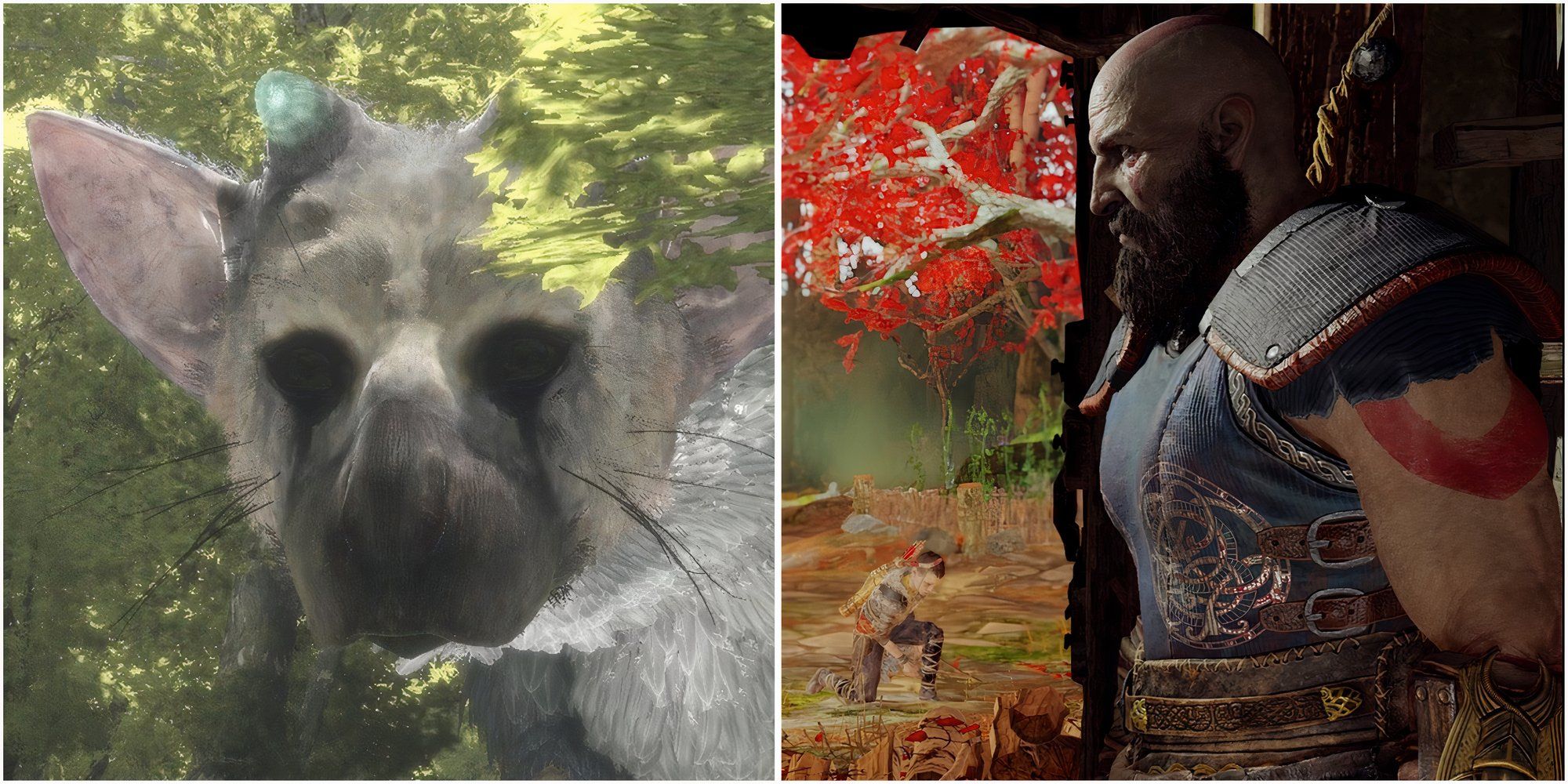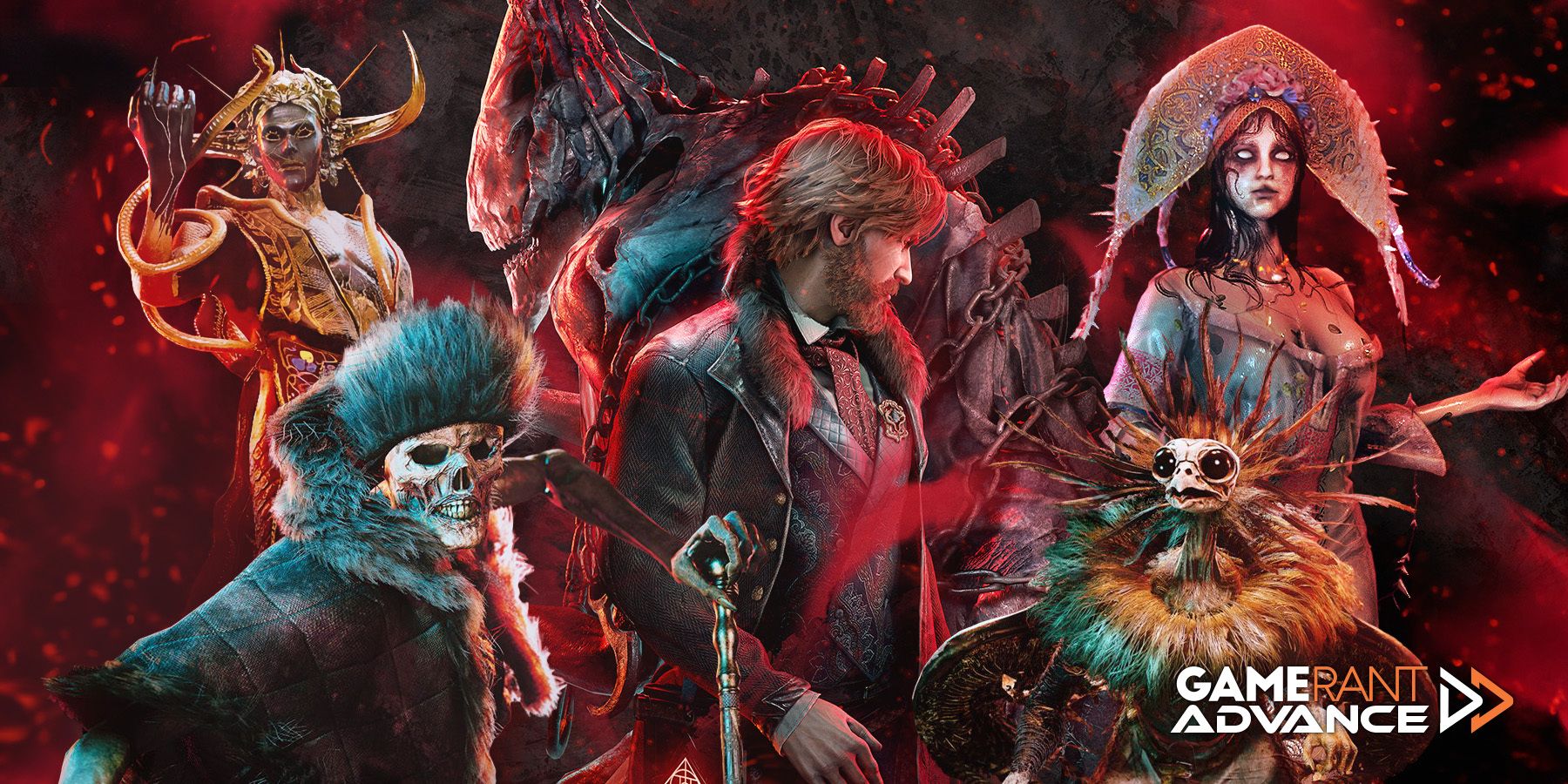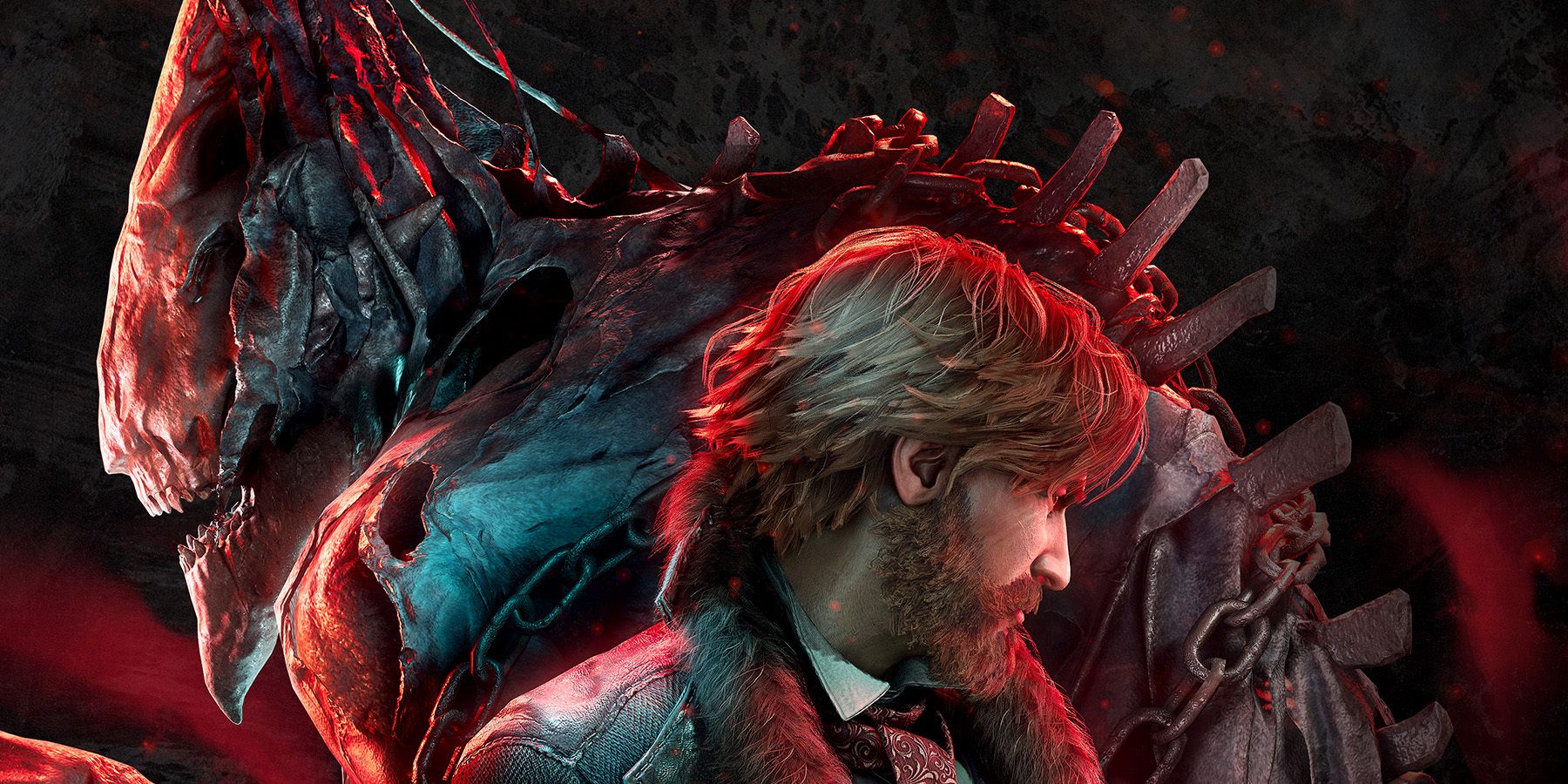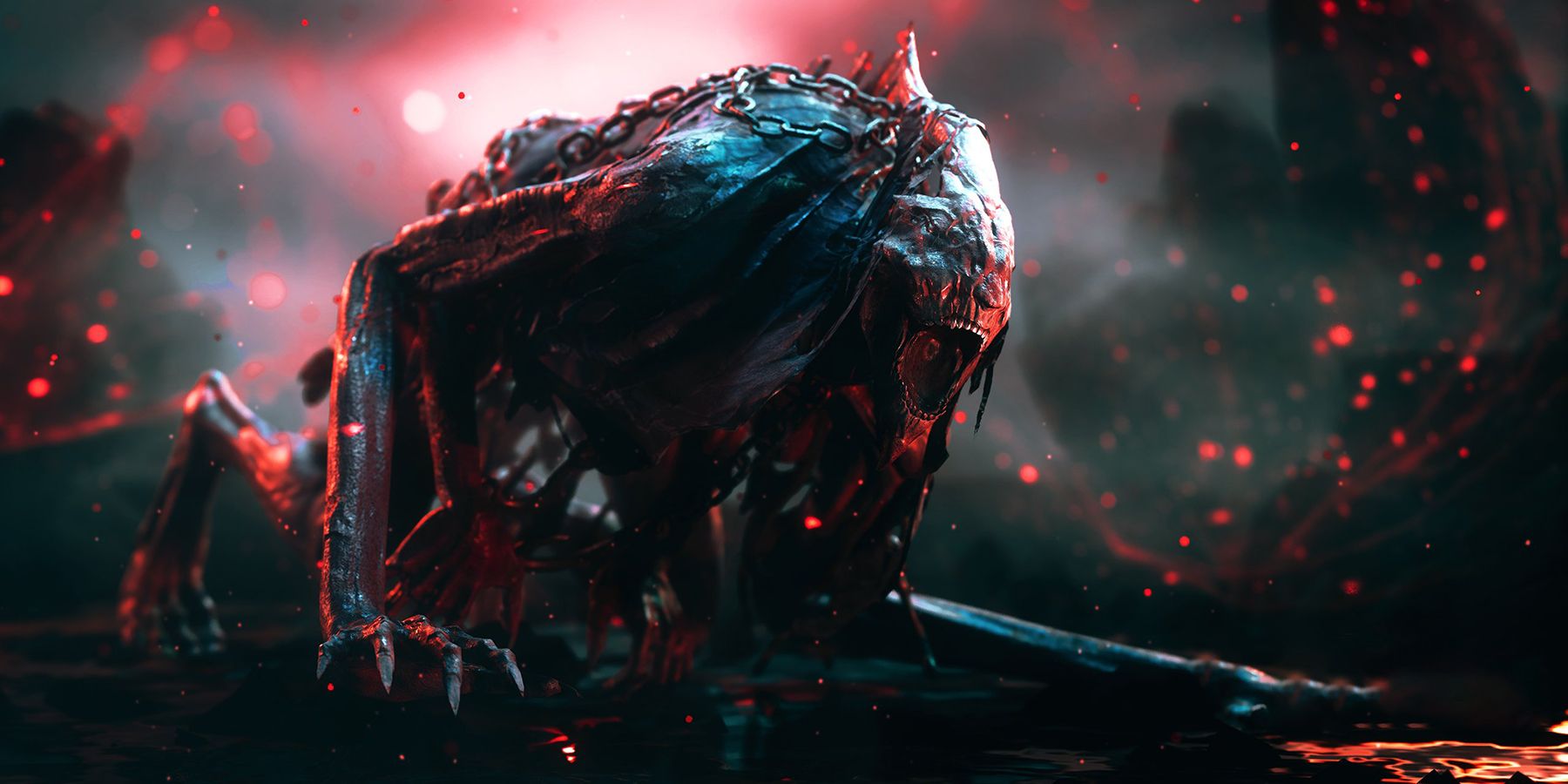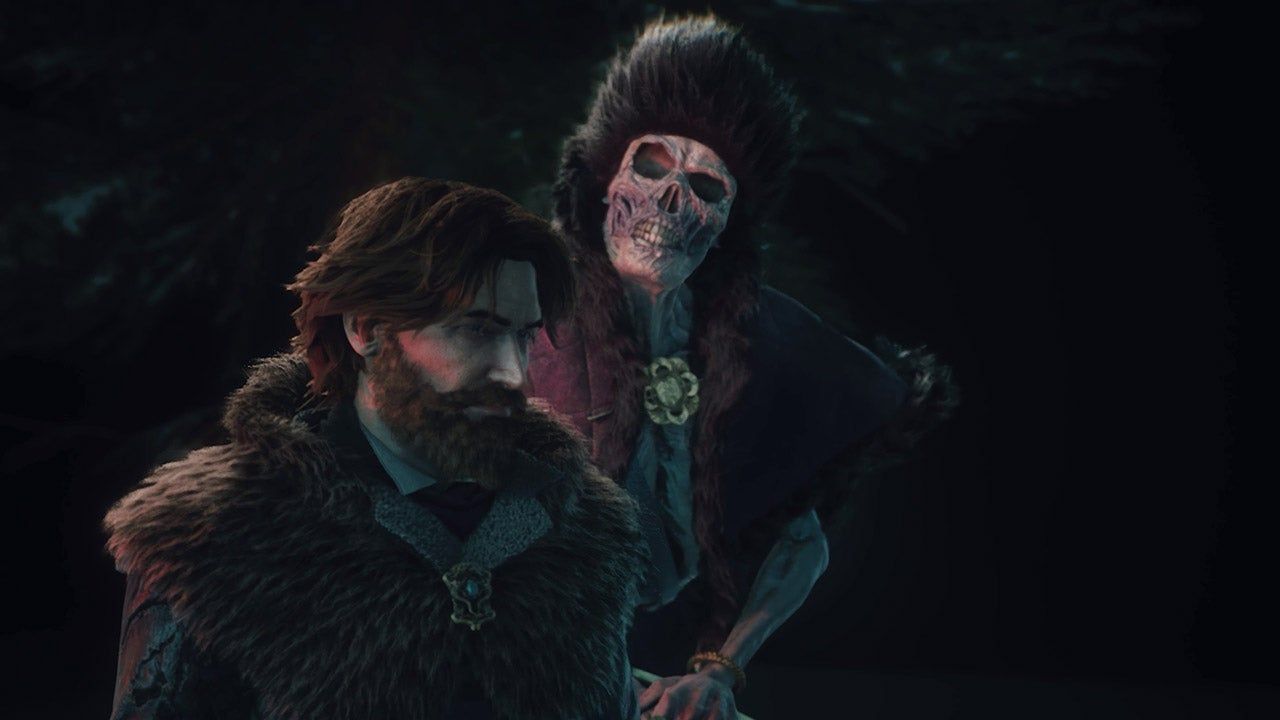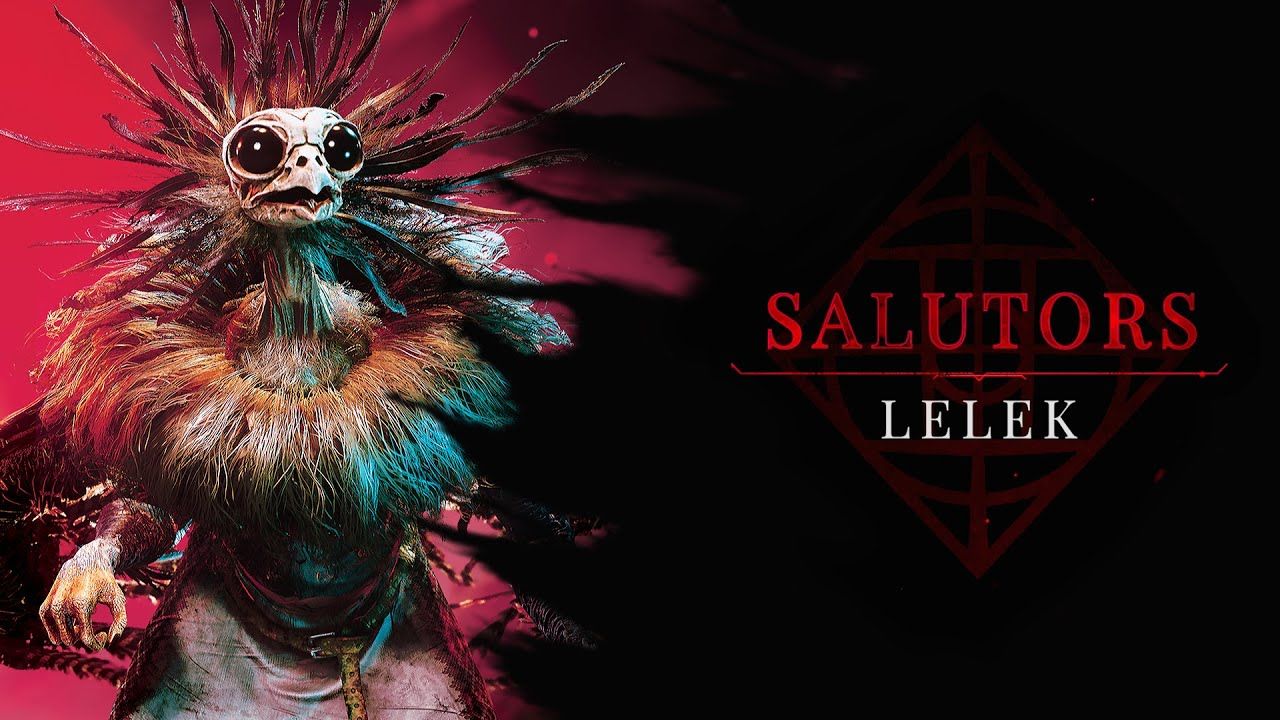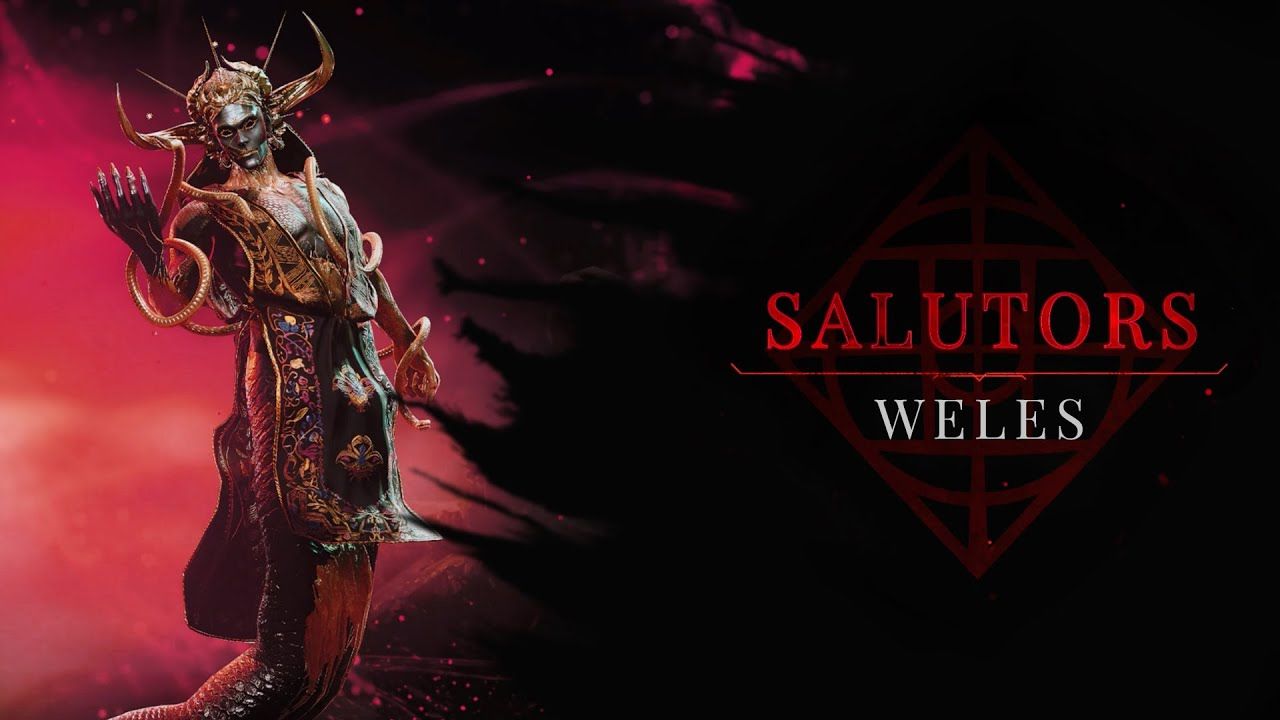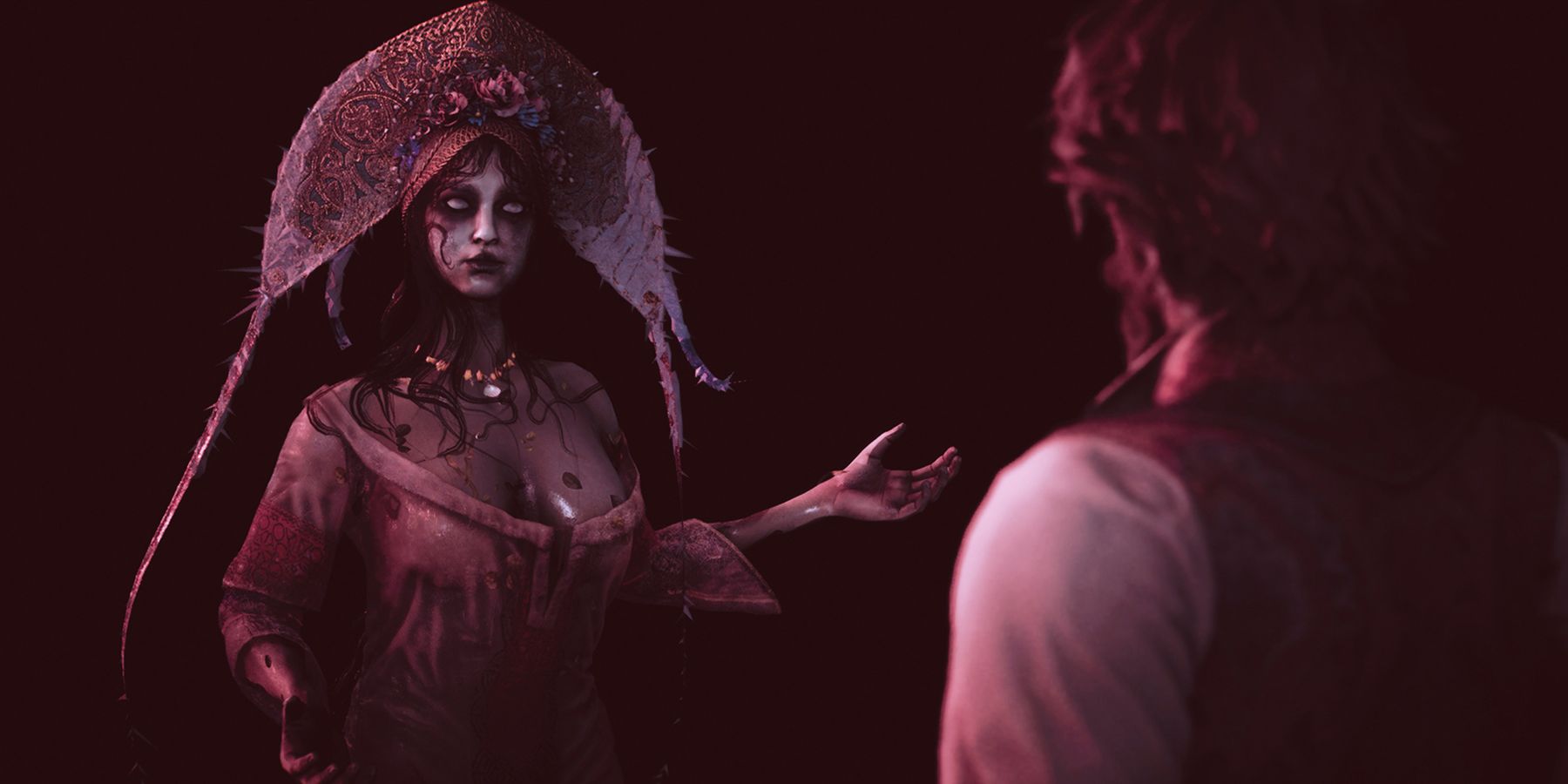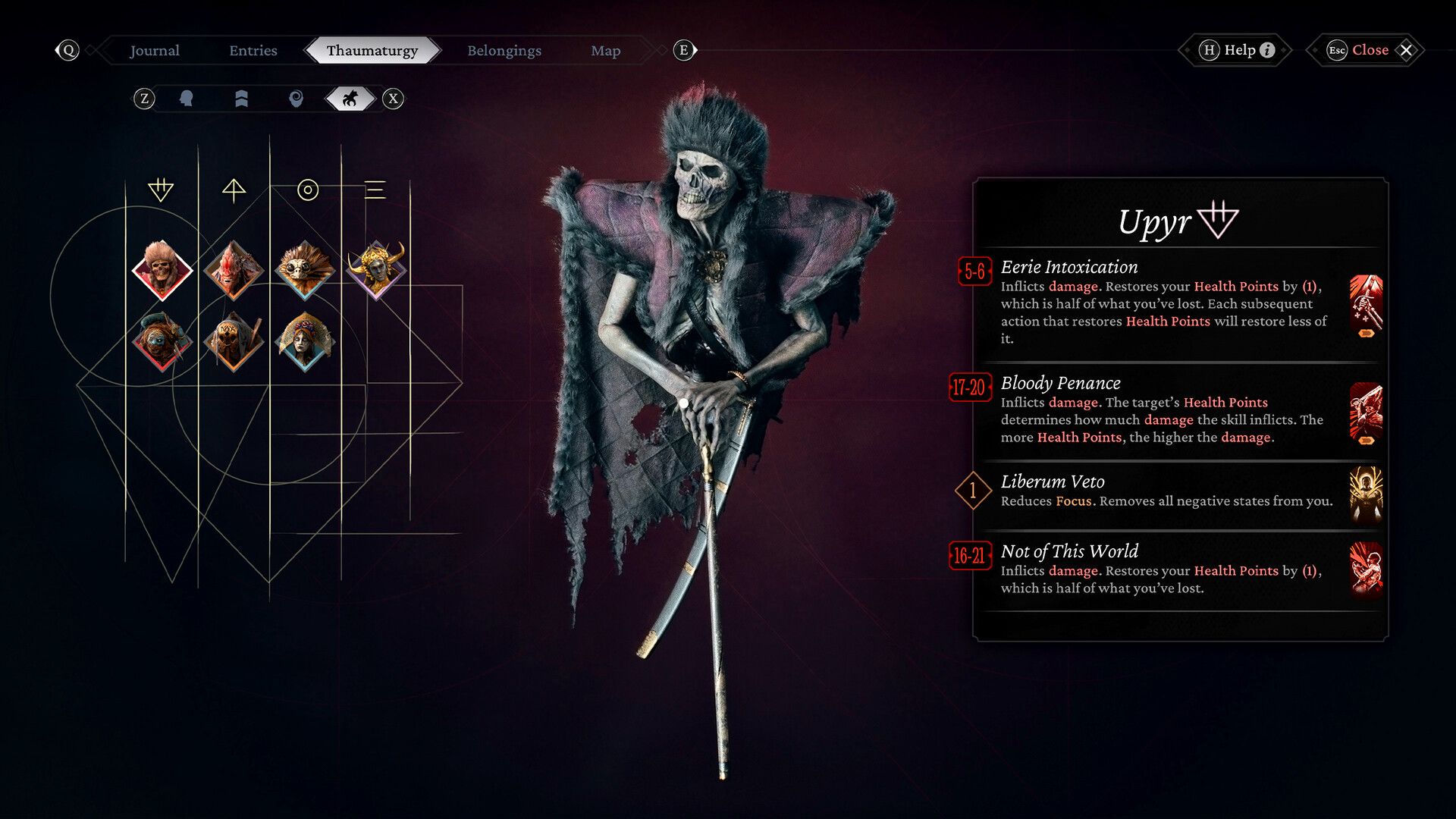The Thaumaturge is an upcoming story-driven CRPG that blends the real world of 1905 Warsaw, Poland with the supernatural. In it, players take on the role of protagonist Wiktor as he returns home and is forced to face his family and his father after 15 years. He shares the abilities of a Thaumaturge, otherwise known as a magician, with his father, which allows them to see esoteric beings called Salutors and their influences on the real world. Alongside his father, Wiktor will encounter other supernatural Thaumaturges, while also crossing paths with real-world historical figures like Rasputin. In this way, it not only combines the approach to history seen in Assassin's Creed but also adaptations of mythology akin to the latest God of War games.
Doing both is quite the task, with The Thaumaturge telling a story that takes elements of the real world and explains them through the eyes of the supernatural. This is an exciting endeavor, but one that requires a lot of work on the part of developer Fool's Theory, which is also working on the Witcher 1 remake. Game ZXC recently spoke with Fool's Theory design director Karolina Kuzia-Rokosz about their design approach to the various Salutors in the game, how they influence the story and gameplay, and so much more. Everything about The Thaumaturge should be a big draw to CRPG fans - its story-driven nature, its fun investigation mechanics, its combat, its world design, and more - but it seems safe to say its crowning jewel, what makes it unique from other CRPGs, is its approach to history and the supernatural with the Salutors.
The Thaumaturge Salutors List
A Salutor is described as an "esoteric being," or in more common terms, an unseeable supernatural creature. They are the ghosts, vampires, werewolves, ghouls, and so forth of the modern age, but with a historical twist. As a Thaumaturge, players can combat these Salutors and other enemies with Salutors of their own. Some fans have described it as "Pokemon meets Lovecraft," and they wouldn't really be wrong. When Wiktor tames a Salutor, he can manipulate people, use them to investigate his surroundings and other NPCs, or use them in combat.
In The Thaumaturge, each Salutor is associated with one of four dimensions that influence its depiction of Thaumaturgy (or "miracles"): Word, Heart, Deed, and Mind. As described by Kuzia-Rokosz,
Each Salutor belongs to one of these dimensions, influencing how they respond to various situations, whether in combat or exploration. In combat, enemies use these dimensions to gain an upper hand over you. Outside of combat, thaumaturges leverage these dimensions to better understand and categorize the emotions, thoughts, or desires of people.
In terms of roleplay, investigating NPCs in each dimension represents an unknowable secret. Mind represents someone's secretive thoughts, memories, and ideas shared with no one; Word represents something once said, screamed, or even whispered within the presence of an object; heart represents the remnants of someone's emotions, desire, and love; and Deed represents the hidden actions no one would willingly admit to. What's more, it's entirely possible for someone playing The Thaumaturge to emphasize and focus on one dimension over another, meaning some elements of the game must be saved for a different playthrough. Someone who has focused entirely on Mind and Word, for example, won't be able to discover the hidden actions and emotions of a character, ensuring that this CRPG, like any good CRPG, has plenty of roleplay opportunity and replay value.
We experimented with numerous methods before settling on the current design, and it's almost too challenging to mention all of them. Nevertheless, we always had a clear idea of what we wanted to pursue: Salutors, mysterious and elusive beings most people don't even believe in, yet you are among the few who can encounter them. They might be overwhelming, scary, or beautiful, but they always carry great power. Taming them is no easy feat, and there is always a lesson in making every Salutor obedient to your will.
Bukavac
The real-world region of Syrmia believed in a demonic creature known as the Bukavac, often depicted as a six-legged monster with gnarled horns, blue eyes, and a pension for strangulation. It would rest, hidden away, in lakes and pools during the day, coming out at night and making a loud, monstrous noise to declare its emergence. It would attack people and animals to strangle them, and this monstrous creature has been an icon for The Thaumaturge so far. Anyone keeping up with the game is likely already familiar with it, as it often accompanies Wiktor in the game's key art. In the game world, this monstrosity manifests as a "punishment for an unforgiven deed" — capable of brutalities only seen in the darkest and scariest of horror stories. One in-game story details a woman, under the influence of a Bukavac, murdering her husband by stabbing him five times in the chest while he was in bed and setting their house on fire. "A devil came and made [me] do it," she claims.
The brutality of the Bukavac is reflected in its gameplay abilities, which inflict a powerful status effect called Suffering onto its targets. Those who are doomed to suffer their mortal coil take extra damage as a result, quickly succumbing to the overwhelming power of the Bukavac.
Upyr
The Upyr is a demonic creature from Slavic and Turkish folklore, believed to be the prototype of the word "vampire." However, there are some key differences between modern vampires and the concept of the Upyr. Upyrs are believed to manifest from unclean souls who do not move on to the eternal afterlife. Upyrs are seen as unclean spirits possessing a decomposed body, as opposed to someone living being turned into the undead. The spirit must then consume blood to sustain the possessed corpse, with these creatures often considered to be vengeful and jealous of the living. It was a common belief that deaths of the unbaptized, particularly gruesome deaths, or the deaths of sinners, sorcerers, and murderers would all lead to unclean spirits, while bodies not given proper burial rites would be candidates for possession.
It is easy to see how this manifests in the Upyr Salutor. The Thaumaturge tells one story of ghosts, Upyrs, haunting the Powazki Cemetery, as they are drawn to those suffering from despair and grief. The gravedigger there, seen acting strangely and even speaking in Latin, would just suddenly and inexplicably disappear one day, a ghost hunter recounts. And, according to this character, more disappearances around Warsaw can be attributed to the vengeance of an Upyr. Their vampiric nature is also reflected in gameplay, as Upyrs are capable of healing themselves as they deal damage.
Lelek
Leleks are derived from real-world Kashubian mythology, in which the forest bird nightjar (the Lelek) is depicted as a spirit of foolishness. The Lelek is often described as living within the minds of the mentally ill, which may have been an old-world rationale for declining mental health. Either way, this manifests in The Thaumaturge as a tiny, grotesque-looking bird spirit, capable of driving a man insane. This very concept also walks the line between the real world and the supernatural. One in-game story sees the murder at a London Bar being due to the influence of alcohol, though there can be no logic or rationale tied to the murder (which happened at a party ongoing from a wedding). What Thaumaturges like Wiktor, and thus the player sees, is the temporary insanity created by a Lelek. What's worse, a Thaumaturge in control of a Lelek could create such chaos and get away unscathed, as while many are superstitious, there is no way to prove an ill-intended magician's involvement.
Weles
While many Salutors in The Thaumaturge are connected to the supernatural creatures of ancient belief systems, Fool's Theory sought all sorts of beliefs. Weles, for example, is derived from the ancient pagan god Veles (or Volos). With the eventual advent of Christianity, Veles' identity would be broken apart into beings such as the devil, saints such as Saint Blaise and Nicholas, and so forth. But, before any of that, Veles was a trickster god not unlike the Norse God Loki. Veles was the god of magic, musicians, wealth, and more, with the Slavic term for a sorcerer (volhov) being derived from his name.
Weles is a Slavic deity associated with luck, fortune, and the kingdom of death. These aspects can be a bit unpredictable. While Weles serves you, his skills are at your disposal, but the 'extra gain' from them might depend on your luck.
And this ancient belief manifests in the Salutor Weles who, befitting its origin, is described as unpredictable and obsessed with money. Its in-game story is connected with a man with a small fortune, Ludwik Baar, who has a gambling addiction. One night in Powisle, however, he would disappear - which was later reported by his daughter. The man acted strangely before his disappearance, with one witness describing it as "if some gambling demon possessed him." He was seen exiting the underground gambling hall, with an otherworldly grin on his face, but he would not be discovered afterward. While the denizens of the world likely see some kidnapping, some mugging, or just some general criminal mystery, those in the know can see the influence of Weles on these events.
Morana
The latest Salutor to be revealed is Morana, as part of this Game ZXC Advance. Morana is derived from an ancient goddess tied to the ideas of death, the rebirth of nature, winter's death, and dreams. It is her yearly "death" at the end of winter that brings spring, and The Thaumaturge depicts this Salutor as a "drowned bride." In-game, she is described as a "quiet death beneath the water" and is known to be a particularly powerful Salutor. Her gameplay abilities are tied to interrupting the enemy, reducing their focus, and otherwise controlling the battlefield with some high damage-dealing abilities to boot.
While each Salutor is based on some form of mythology, they exist in a world that denies their existence. This means real-world events unfold with or without their influences, and this dichotomy between the real world and the supernatural one is reflected in the contrast of Polish society. Warsaw is a place where historical figures would visit and conduct business, but also a place with the lowest of lows, such as Powisle, an impoverished shanty area. Ultimately, the contrast between the good and the bad, the high class and the low class, and the real world and the supernatural one is at the heart of The Thaumaturge.
Each district you visit in the game has its unique vibe, with its own mood and people focusing on matters unique to them. It's like stepping into different worlds. Warsaw, during that time, was a complex city where poverty could be found right next to splendid, newly built tenements. The city was a vibrant and popular destination for those who had lost their land or sold it, seeking better fortune in the urban setting. We witness the emergence of the first worker unions, encounter underground fighters, delve into the world of the mafia, and meet common, decent people just trying to earn a living.
How Fool's Theory Designed Each of the Salutors
As many know, game development is not a process where everything is achieved on the first try; no, it requires constant iteration and innovation to land on a final idea. The same can be said of each of the Salutors mentioned here. Each has evolved from the initial concept in design, gameplay, story role, and more. But each began with a powerful single start, an idea that describes what the Salutor represents.
Kuzia-Rokosz revealed these for the four main Salutors revealed thus far.
- Upyr: A fallen medieval Slavic knight on a battlefield, a bitter spirit
- Bukavac: A punishment for the crime that would always come.
- Lelek: A trickster that leads people astray and drives them insane.
- Weles: Splendor, please. MORE, MORE GOLD!
From there, Fool's Theory would iterate "a lot," beginning with a shape and design that spoke to the team and its core ideas, then iterating even more. Kuzia-Rokosz describes every final form as very different from the original concept but noted that the team was very happy with how they ended up. Further, it's worth noting that fans keeping up with The Thaumaturge might reasonably believe every Salutor is based on Slavic mythology and history, but that's not the case. Only five Salutors have been revealed, after all, and Kuzia-Rokosz assured us that there would be Salutors from "Jewish, Bavarian, and Arabian Circles. Each of them is distinct."
The sheer variety in each Salutor design is purposeful and, to some degree, is associated with the game's marketing slogan: "Everyone has their own demons." Kuzia-Rokosz would speak to how this slogan ties in with the Salutors and the great world of The Thaumaturge.
This holds various meanings. What defines a demon? We each have our own interpretation. Throughout the game, we aim to illustrate that demons wear different faces. Sometimes, these are the faces of Salutors; other times, they are the faces of people, the human psyche, or the internal struggles we grapple with every day.
Players will also encounter other Thaumaturges in the game, and in some cases, it might come down to a fight of Thaumaturge vs. Thaumaturge. Yet, the Salutors they have will not just be the ones players have seen so far.
"Oh, and other Thaumaturges have unique Salutors of their own. These Salutors already have a master, so you cannot claim them, but you may always admire them."
Like a Good Magician, Fool's Theory is Keeping Salutors Up Its Sleeve
The Salutors are easily one of the biggest draws for The Thaumaturge, and fans no doubt want to know more about them. Of course, if a magician explains the trick before showtime, the magic is gone. It's uncertain how many Salutors Fool's Theory will reveal before The Thaumaturge's release in February, but the studio will likely keep many, if not the majority, of them hidden. However, eagle-eyed fans may notice a few details about the upcoming Salutors. In the image above, fans can see Morana who was teased prior to our proper reveal. She is joined by two other currently unrevealed Salutors on the bottom row, although it's hard to discern what they could be. One looks to be some goblin-like creature, with one eye covered in wraps, while the other seems to be a golden, skull-like mask with a hood (not to be confused with Weles). While just speculation, it looks like there's enough space in each dimension to fit 4-5 Salutors, possibly putting the final total somewhere between 16-20. In other words, fans have just gotten a small glimpse at the world of The Thaumaturge so far.
Salutors are the magic trick that The Thaumaturge needs to stand out in the saturated CRPG market. More information will likely be revealed in the coming months before release, and just like any good magician, Fool's Theory is probably saving its best trick for last.

The Thaumaturge
The Thaumaturge is a story-driven RPG set in 1905 Warsaw, Poland. Players take on the role of Wiktor, who can see entities called Salutors that normal humans cannot. It features isometric gameplay, turn-based combat, morally ambiguous choices, unique character development features, investigation mechanics, and much, much more.
- Platform(s)
- PC
- Released
- March 4, 2024
- Developer(s)
- Fool's Theory
- Publisher(s)
- 11 Bit Studios
- Genre(s)
- Adventure , RPG

